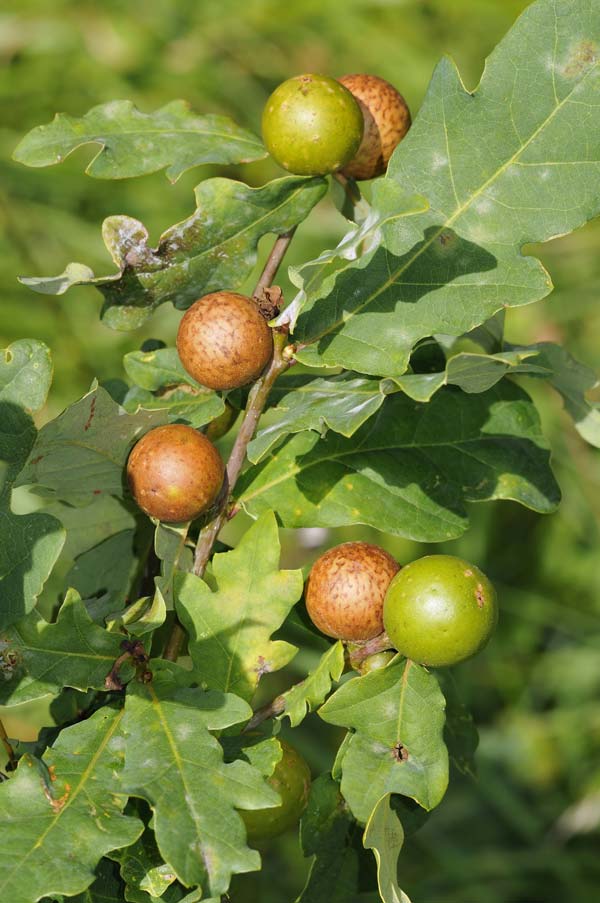
Tannins, or the compounds in grapes (and oak barrels) that contribute to a pleasing sensation of astringency in red (and some white) wines, are found in grape skins and seeds. As a class of compounds, they are very important in winemaking as they are amazingly powerful antioxidants in addition to contributing in important ways to the sensorial quality of any given wine. A very tannic wine can make your mouth, tongue, and cheeks feel puckery and dry but a wine that has a balanced tannin level will have some “grip” while not being overpoweringly tannic. Big red wines like Petite Sirah and Cabernet Sauvignon will normally contain more tannins than lighter reds like Pinot Noir; the grape skin chemistry is just that different. As a result, Pinot Noirs generally feel softer on the palate but, due to their lower tannin content, might not age as long or as well as a more tannic red wine counterpart.
Proper tannin management during the winemaking process, from grape to bottle, is a skill set that can take years for winemakers to master because each variety, region, vineyard, and vintage is different. The natural tannin levels in any given red fermentation can vary greatly from one to the other. In addition to agitating the skins via punchdowns or pumpovers during the fermentation process (called “maceration”) to extract tannins, winemakers can also add tannins at many points along the winemaking timeline. These tannins can be in liquid or powder form and are sourced from grape skins, grape seeds, oak wood, oak galls, and even quebracho wood (a South American tree). In addition, aging in oak barrels or using oak pieces or staves during aging are also technically a tannin addition as tannins present in the wood will get leached into the wine over time.
Intuitively, the closer a wine is to being bottled (and therefore then left to age and mellow on its own), the more careful a winemaker should be about making drastic tannin additions. Also, as my loyal readers know, I always recommend bench trials when making additions lest we go too crazy and make an addition we don’t like.
That being said, the safest and arguably best time to boost a wine’s tannin content is early on in the winemaking process, as they’ll have the most time to integrate into a wine and become a seamless supporting addition to the entire wine matrix. The term “sacrificial tannins” that you are asking about, are tannins added especially early on in the winemaking process, usually upon crushing or very soon thereafter. The idea is to add these tannins to must so that they will be oxidized early on in the winemaking process, instead of the grape skin tannins that you want to keep.
So, what gets “sacrificed” by adding sacrificial tannins? Many of the added tannins themselves. By adding extra tannin at the beginning and increasing the overall tannin content in any given fermentation, both grape tannins and the added tannins will be oxidized, or sacrificed. By adding extra tannins into the mix, a greater proportion of grape skin tannins will be preserved than if you didn’t add any extra tannin. Many winemakers also feel that by adding tannins at crushing (which act as an oxygen sink) they can get away with adding less sulfur dioxide at crushing as well.
There are many different types of tannin on the market from just about every major winemaking supplier. Most are classed as “fermentation tannins,” “aging tannins,” and “finishing tannins.” Finishing tannins are intended for use within 3–6 months prior to bottling, aging tannins are supposed to be added after all fermentations are complete, and, as you may presume, fermentation tannins are meant to be added during active fermentation.
Anecdotally, I’ve found that finishing tannins are gentler, more refined, and often more expensive as they tend to be aromatic oak extracts. One can add them usually up to 6 weeks before bottling because the effect is subtle, and the molecules are smaller and “marry” with the wine much more easily than the rougher aging and fermentation tannins. I wouldn’t waste my money by putting finishing tannins into a fermentation where they may just drop out of solution over time and not “stick” in the final wine after the tumult of the fermentation, racking, and aging process. It’s critical to always do very careful bench trials when adding anything that close to bottling.
I find that aging tannins as a class can be quite angular and, depending on the brand, can be quite rough and aggressive. It’s important to do bench trials here as well, lest you add too much of something unpleasant. Fermentation tannins (or sacrificial tannins) tend to be the simplest and the least expensive and are often the roughest tasting. They really should be used only for fermentation. Even then, I would still tend to hew to the lower range of the manufacturer’s suggested addition rate, just to be safe.
Another more nuanced way to introduce tannins into a fermentation, and a method I often employ, is to add a 50/50 mixture of toasted and untoasted fine-grain oak chips to the fermentation at the rate of about 1–1.5 g/L. My favorite brand is Radoux (they have a great mixed product called “Duofresh”) and I find that it helps preserve color, serves as an oxygen sink, and also starts the wine along its way to gain in subtle oak character. The quality of the oak is very high; these aren’t “shop floor shavings” at all. Other oak producers sell similar products — they are worth seeking out as I find them to be subtler and a little more forgiving than adding straight up tannin powders or liquids to fermentations.



